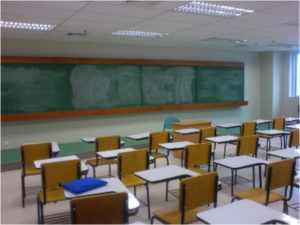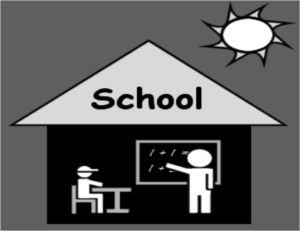School Based Crisis Response Team Rise to the Challenge
By: Dr. Mary Schoenfeldt

What Do You Do? A million wide eyed, innocent, frightened children are looking to YOU for calm reassurance in a time of uncertainty and you are told you can’t be near them, what do you do? And what does that DO to you?
Those are just two of the questions educators were facing as the Corona Virus began invading every corner of the globe.
In order to meet the need of COVID 19, educators at all levels… pre-K through Ph.D. programs, had to put their own fears aside and step up. For many, the response included honing their educational skills in a totally unknown and foreign environment… virtual! Distance learning was a common practice for a small percentage of teachers across the country. For the vast majority, though, it was a new skill set that needed to be learned literally overnight.
It was a time when education was flipped upside down. In many cases, it became the student teaching the adults. The most familiar model of education has been with us for generations… a brick and mortar model of one or two adults in the front of a room of 30 or so students. All the hours of in-service about classroom seat arrangement, behavior management, and in person supportive interaction had to be set aside while teachers reinvented lessons and presented them using a new technology… Zoom or another learning platform. Teachers were also teaching parents the new technology and more than once, our children took the lead … “no, Mommy, this is the button you push.”
Educators did this all while staying home with their own families and adjusting to personal challenges also.
The demands were great and the resulting stress were even greater. Educators report panic attacks, sleepless nights, paralyzed thinking, physical distress and exhaustion. Their days were now filled with emails, zoom staff meetings, calls from principals and parents, technology tutorials and in all that chaos, they needed to find time to connect with their students and actually teach them something all the while reassuring them that everything was ok!
The teachers were experiencing a combination of shock, anxiety, grief and loss. Shock as the reality set in, anxiety over being able to adjust and do a good job, grief over the sudden changes and loss of familiarity and in some case, students who for any number of reasons didn’t sign in to the new virtual classroom. Teachers at all grade levels count on the personal connections they have with students to be able to help them learn. The new demands, techniques and environment made that difficult.

Educators also were experiencing what has become known as Zoom Fatigue. Zoom became a household word and with that familiarity came consequences. As many people in the hearing impaired community can tell you, staying attentive by watching people in order to communicate and connect is exhausting. Zoom brings it’s own cluster of frustration: pixilation, loss of connectivity, technological challenges of all kinds, plus the sense of being “on” all the time… and not just you, but your kitchen, your dining room or in some cases, your garage! Just finding a place to be with your computer where you won’t be interrupted or distracted was a challenge!
But educators stepped up to the challenge and are doing an incredible job of teaching and working to handle the added stressors that come with it.
For our School Based Crisis Teams, there was an additional challenge. How do you provide crisis support for the COVID 19 Disaster (it is a disaster) and how do you provide support when a student in the community drowns or a staff member dies of the virus or any of the other types of crisis that impact a school community?
I was asked that question early on and my response was we need to break it down to the basics and go from there. As a seasoned Emergency Management Professional, I had a good idea of the realities that were coming for everyone, not just teachers. We knew there would be deaths, there would be responders from every discipline feeling they didn’t do enough, there would be those who turned their stress outward into child abuse and domestic violence and there would be those who turned their stress inward into depression.
Along with the plan for response, comes a plan for recovery and that needed to be part of the plan also. This would be over, it wasn’t forever and there would be positives that came as a result. The opportunity for post traumatic growth is here too.

Now came the creative part, how do we react and support people impacted when we can’t gather in a room, either as individuals or as groups?
First, we needed to support the teachers who were tasked with a monumental job. Overnight, our educators went from community members to non-traditional disaster responders.
One school district who learned the hard way, through a murder/suicide incident a few years ago, knew that stress management and support was going to be the key ingredient to meet this new challenge. Leadership knew that staff needed good support to be successful in Zoom and other learning platforms so they provided quality education in the form of tutorials and training in the new technology. They organized a group of mentor teachers who were comfortable with the technology to be available for those who were still learning. They also knew staff needed reminders of just how great they were so there were daily notes… not long emails… just notes, pictures and posters that said you’ve got this, we are behind you and please do your own self care because you are valuable. They supported staff as parents in the form of check ins and flexible time demands and practical assistance when needed.
Many School Crisis Teams were proactive and adjusted their typical response protocols to meet the new challenges. Procedures were developed to provide CMB’s in a virtual environment. A small targeted virtual group session format was created that would allow a crisis team member or counselor to meet with those most impacted and provide the support they might need. An added element to this was to involve parents more so they could provide the support to their child at home.
Adaptive formats for one on ones, diffusing and even the rare debriefing were created with the primary focus being safety of everyone involved. Some were done virtually, others were done in person but with a very small group practicing social distancing and wearing face coverings. Not ideal, but effective.
But now it’s time to think about reopening schools. School in the past was the safest place our children were each day and in this particular disaster, it was labeled as the most unsafe of all places… that’s why they were closed.
Care must be taken to address both the physical safety and the emotional safety for all school community members. A deliberate plan to ensure physical safety is the first step. That will involve sanitizing, redefining procedures like school bus seating, classroom arrangement, hand sanitizing stations in every hallway, food service adjustments, athletic programs revised and a host of other adaptations. Each of these need to be communicated to students, staff and parents to increase their level of comfort and trust.
When the planning begins to reopen school, one of the first activities should be a staff meeting… maybe still using Zoom… and asking staff to list their concerns and give them a chance to talk about their own emotional realities. Zoom and other platforms are the perfect environment to do small group conversations.
A facilitated workshop on Compassion Fatigue for Educators is a great way to not only teach the concept, but create a safe space to acknowledge the reality and end with an individualized self-care plan to start the new year. This workshop includes activities that create buddy systems for support and a commitment from leadership to increase awareness of Compassion Fatigue and encourage mitigation strategies to address it throughout the coming year.
Teachers and students should have a role in helping to make their environment feel welcoming and safe again. Staff meetings, open houses, parent meetings and student activities that give them a task to help them feel they have control over their own safety will help. For example, a procedure of asking every student to sanitize their own desk as they come in the morning and again throughout the day all the while still having custodial staff doing it before school starts each morning.

As this is written, we are still in the throes of the pandemic and we have a long way to go before it is over. We will never get back to “normal”. Normal is just a setting on a dryer. But we will create familiar and comfortable as time goes on and we adapt, adjust and grow as a result of it.
The school community has stepped up and will keep doing that. Those wide eyed children who looked to us for reassurance found our educational system up to the challenge. Crisis comes in all forms, this one is unique but certainly not unmanageable… our school systems have proven that.
AUTHOR: Dr. Mary Schoenfeldt is an ICISF Faculty member and the co-author of the newly revised course Managing School Crisis: From Theory to Application along with the manual that accompanies the class. She also is Board President of Green Cross Academy of Traumatology, a nonprofit disaster response agency and a Subject Matter Expert for US Department of Education. She can be reached at [email protected]